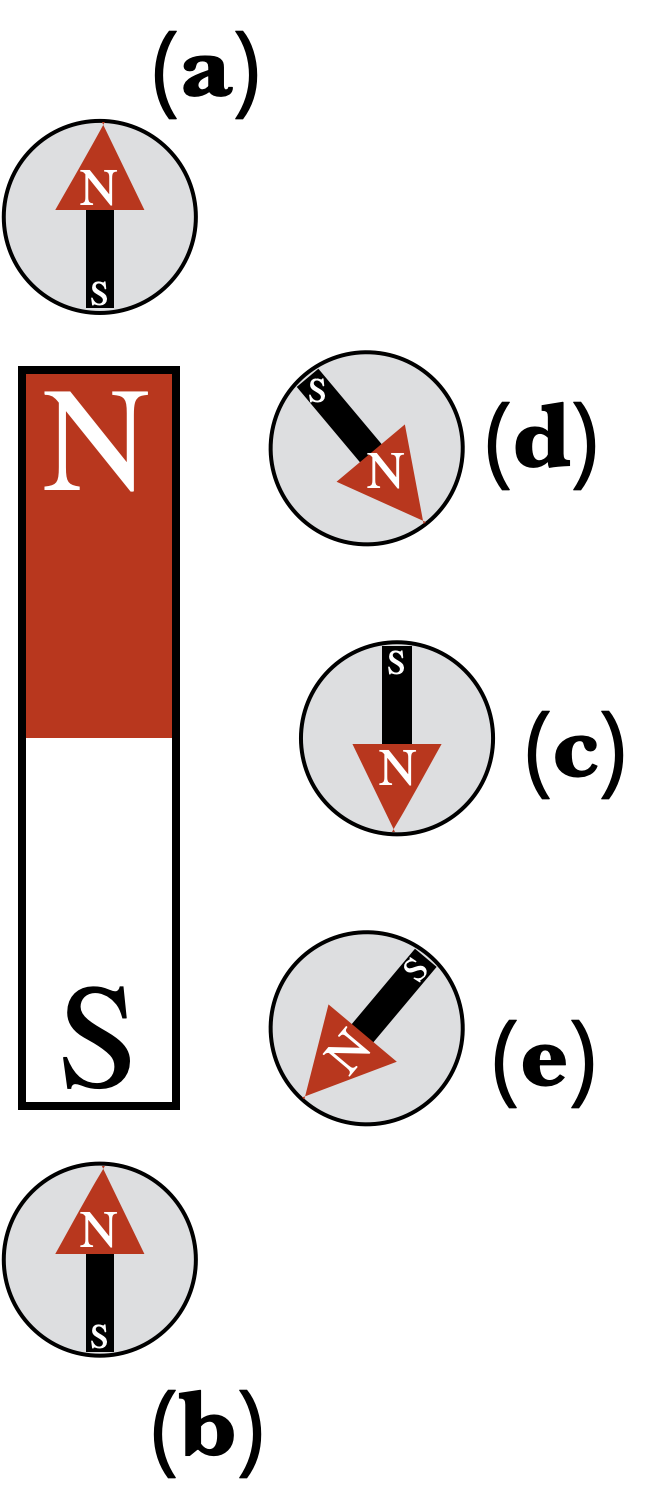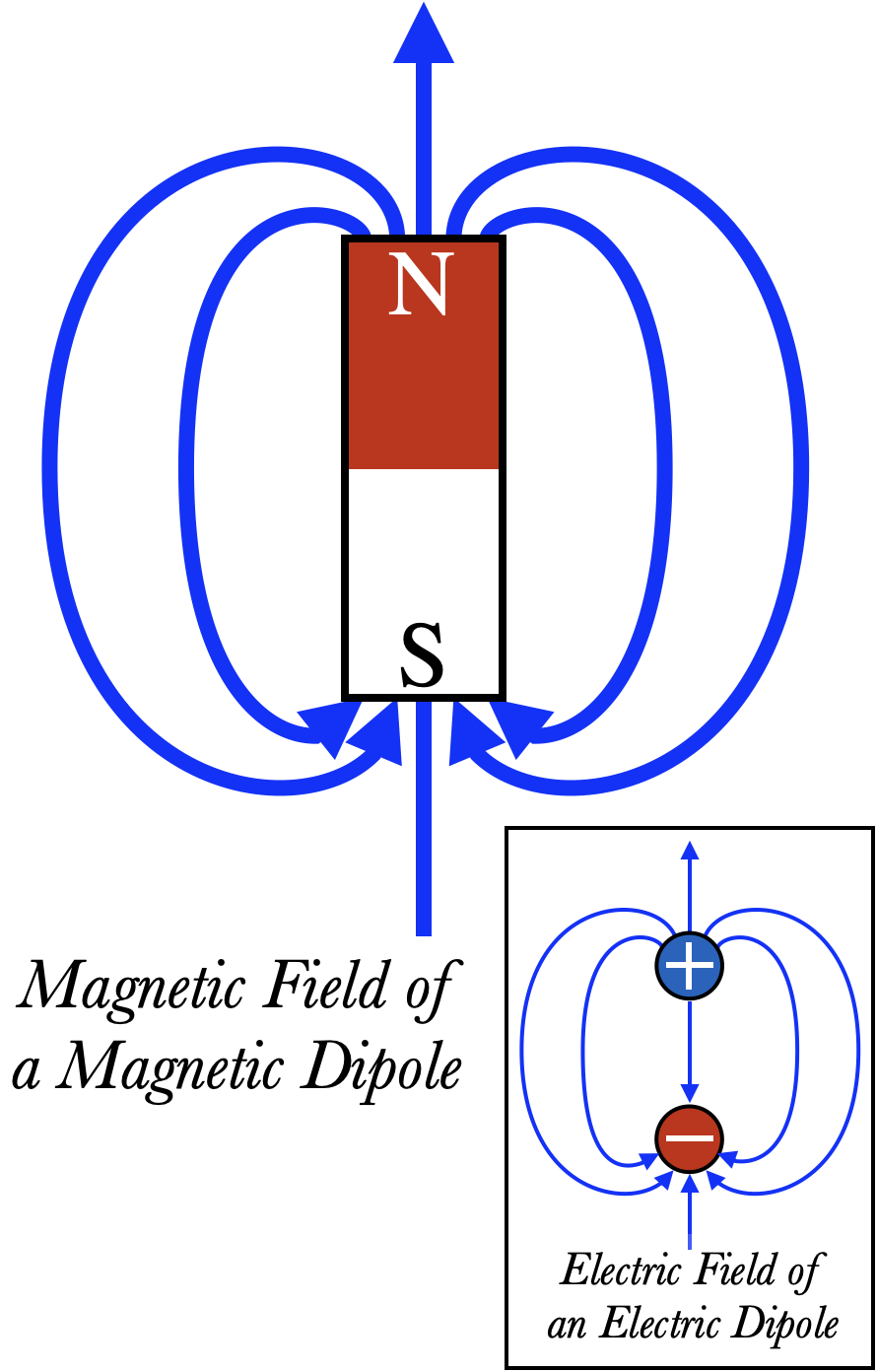Magnetic Field
Just as in Action at a Distance, we think of the magnetic force as a two-part process: a source creates a magnetic field which exists everywhere in space, and a target reacts to that magnetic field. Compass needles will point in the direction of the magnetic field; conversely,
Suppose we place compasses at various points around this compass.
- At (a), the S pole of the compass is attracted to the N pole of the magnet, and so the compass points upward.
- At (b), the N pole of the compass is attracted to the S pole of the magnet, and so the compass also points upward.
- At (c), the N pole of the compass wants to point at the S pole of the magnet, but the S pole of the compass wants to point at the N pole of the magnet. Since the compass is equidistant between those two poles, the compass compromises by pointing downward.
- At (d), however, the N pole of the magnet is closer, and so the compass is tilted a little to the right.
- At (e), on the other hand, the S pole of the magnet is closer, and so the compass is tilted a little to the left.

Just as with electric fields, we can connect all of these magnetic field directions into smooth lines, called magnetic field lines. This particular field, called a dipole field, has a characteristic and recognizable shape (with its lobes on either side). It in fact looks identical to the electric field of an "electric dipole" which we saw earlier.
Because compasses point towards the Earth's north magnetic pole, that pole must actually be an "S" pole! The names "north" and "south" for the magnetic poles refer to the direction that a compass needle points, not to the field of the Earth itself, which is much larger and not so directly involved in experiments. This is why I've been calling the magnetic poles "N" and "S", instead of "north" and "south", to avoid saying things like "the north magnetic pole is a south pole and the south magnetic pole is a north pole".
- Magnetic field of the Earth
- Link to USGS website